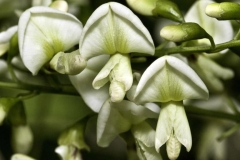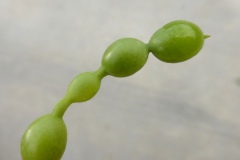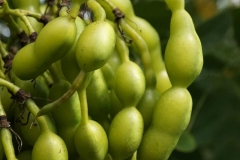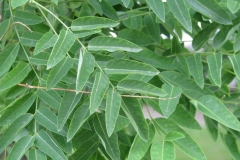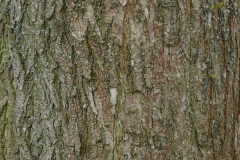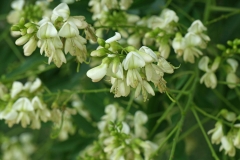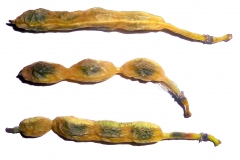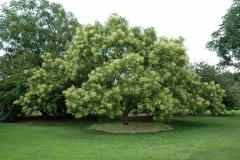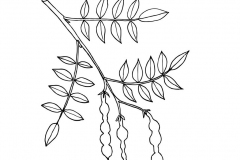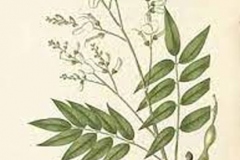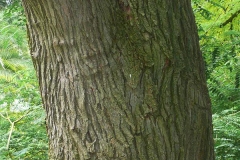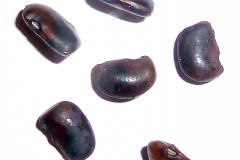| Pagoda tree Quick Facts | |
|---|---|
| Name: | Pagoda tree |
| Scientific Name: | Styphnolobium japonicum |
| Origin | East Asia—central and northern China Japan, and Korea |
| Colors | Yellow-green becoming light brown at maturity |
| Shapes | Clusters of slender, leguminous pods that range from 2 to 4 inches long, containing 1 to 6 seeds |
| Taste | Bitter |
| Health benefits | Hemorrhagic hemorrhoids, metrorrhagia, hypertension, poor peripheral circulation, ophthalmia, intestinal worms, dizziness, red eyes and headache |
| Name | Pagoda-tree |
|---|---|
| Scientific Name | Styphnolobium japonicum |
| Native | East Asia—central and northern China Japan, and Korea, but now widely cultivated in temperate and subtropical regions of the world, and rarely in highlands in the tropics, in South-East Asia at least in Vietnam and Thailand. It is a popular ornamental plant in Europe , North America and South Africa |
| Common Names | Chinese Scholar Tree, Japanese Pagoda Tree, Pagoda Tree, Scholar Tree, Umbrella Tree |
| Name in Other Languages | Afrikaans: Pagodeboom, Japanese pagode boom Albanian: Soforë, pemë faltore japoneze Amharic: Yejapaninya pagada zafi (የጃፓንኛ ፓጋዳ ዛፍ) Arabic: Sufayra alyaban (صفيرا اليابان), shajarat maebad alyabania (شجرة معبد اليابانية) Armenian: Sofora chaponakan (սոֆորա ճապոնական), chaponakan pagoda tsarr (ճապոնական պագոդա ծառ) Azerbaijani: Yapon soforası, yapon paqoda ağacı Basque: Japoniar sofora Bengali: Jāpāni pyāgōḍā gācha (জাপানি প্যাগোডা গাছ) Brazil : Sôfora Do Japão Bulgarian: Sofora (софора), yaponsko pagodno dŭrvo (японско пагодно дърво) Burmese: Gyapaan bhurarr bhurarr (ဂျပန်ဘုရားဘုရား) Catalan: Acàcia del Japó, sófora Chinese : Huái Hua, Huái Hua Mo, Huái Jiao, Huái Mi, guo huai, huai shu (槐树), zhong guo huai, huái (槐), Rìběn bǎotǎ shù (日本宝塔树) Croatian: Sofora, stablo japanske pagode Czech : Jerlín Japonský, japonský strom pagody Danish : Pagodetræ, Pagodetræ-slægten, japansk pagodetræ Dutch: Japanse honingboom, Honingboom, Japanse pagodeboom English: Chinese Scholar Tree, Japanese Pagoda Tree, Umbrella Tree, Pagoda-tree, Scholar-tree Esperanto: Japanese pagoda tree Estonian : Jaapani Keepuu, jaapani pagoodipuu Filipino: Puno ng pagoda ng Japanese Finnish: Japanilainen pagodapuu French : Arbre Aux Pagodes, Arbre De Miel, Arbre Des Pagodes Du Japon, Sophora Du Japon, Sophore du Japon, pagode japonaise Galician: Sófora Georgian: Iap’onuri p’agodis khe (იაპონური პაგოდის ხე) German : Japanischer Perlschnurbaum, Japanischer Schnurbaum, Pagodenbaum Sophore, Perlenschnurbaum, Schnurbaum, japanischer Pagodenbaum Greek: Iaponikó déntro pagodas (ιαπωνικό δέντρο παγόδας) Gujarati: Jāpānī pēgōḍā vr̥kṣa (જાપાની પેગોડા વૃક્ષ) Hausa: Itacen pagoda na Japanese Hebrew: עץ הפגודה היפני Hindi: Jaapaanee pagoda ka ped (जापानी पगोडा का पेड़) Hungarian : Japánakác, Közönséges japánakác, közönséges pagodafa, japán pagoda fa Icelandic: Japanska pagóða tré Indonesia: Sari cina, sari kuning, pohon pagoda jepang Irish: Crann pagoda Seapánach Italian : Sofora, Sofora Del Giappone, albero di pagoda giapponese Japanese : Enju (エンジュ), Nihon no tō no ki (日本の塔の木) Javanese: Wit pagoda jepang Kannada: Japānīs pagōḍā mara (ಜಪಾನೀಸ್ ಪಗೋಡಾ ಮರ) Kashmiri: ﭼﮭﺘﺮ ﻛﹹﻞ Chhatur kul, ﭼﮭﺘﺮﯼ ﻛﹹﻞ Chhatri kul Kazakh: Japondıq pogoda ağaşı (жапондық пагода ағашы) Korean : Hoe-Wha-Na-Moo, hoehwanamu (회화나무), ilbon tab namu (일본 탑 나무) Kurdish: Dara pagoda japonî Lao: Tonmai sao phasaiipun (ຕົ້ນໄມ້ເສົາພາສາຍີ່ປຸ່ນ) Latin: Styphnolobium Latvian: Japāņu pagodas koks Lithuanian: Japoniškos pagodos medis Macedonian: Japonsko pagoda drvo (јапонско пагода дрво) Malagasy: Hazo pagoda japoney Malay: Pokok pagoda jepang Malayalam: Jāppanīs pagēāḍa ṭrī (ജാപ്പനീസ് പഗോഡ ട്രീ) Maltese: Siġra tal-pagoda Ġappuniża Marathi: Japaanee shivaalay vrksh (जपानी शिवालय वृक्ष) Mongolian: Yapony pagoda mod (японы пагода мод) Nepali: Jāpānī pyāgōḍā rūkha (जापानी प्यागोडा रूख) Norwegian: Pagodetre, japansk pagodetre Oriya: ଜାପାନିଜ ପାଗୋଡା ଗଛ | Pashto جاپاني پگوډا ونه Persian: تلخهبیان, درخت بتکده ژاپنی Polish : Perełkowiec Japoński, Szupin Chiński, Szupin Japoński, perelkowiec chiński, sofora japońska, japońskie drzewo pagody Portuguese : Acácia-Do-Japão, Sófora-do-japão, árvore de pagode japonês Punjabi: Japānī pēgōḍā rukha(ਜਪਾਨੀ ਪੇਗੋਡਾ ਰੁੱਖ) Romanian: Copac japonez de pagodă Russian: Sofora Yaponskaya, Stifnolobium Yaponski, Софора yaponskaya (японская), japonskaja pahoda (японская пагода) Serbian: Sofora, japanski bagrem (јапански багрем), drvo japanske pagoda (дрво јапанске пагоде) Sindhi: جاپاني پگوڊا جو وڻ Sinhala: Japan pægōḍā gasa (ජපන් පැගෝඩා ගස) Slovak: Sofora japonská Slovene: Japonska sofora, metuljnice, pagodovec Slovenian: Japonsko pagodno drevo Slovencina : Sofora Japonská Spanish : Acacia Del Japón, Arbol De Las Pagodas, Sófora, Acacia bastarda, Sófora del Japón, Sophora japonica, pagoda japonesa Sudanese: Tangkal pagoda jepang Swedish : Pagodträd, Pagodträdssläktet, japansk pagodträd Tajik: Daraxti sagʙacai japonī (дарахти сагбачаи японӣ) Tamil: Kōpura maram (கோபுர மரம்), Jappāṉiya pakōṭā maram(ஜப்பானிய பகோடா மரம்) Telugu: Japanīs pagōḍā ceṭṭu (జపనీస్ పగోడా చెట్టు) Thai: T̂n cedīy̒ ỵī̀pùn (ต้นเจดีย์ญี่ปุ่น) Turkish : Japon Soforası, sofora, japon pagoda ağacı Ukrainian: Sofora yaponsʹka (Софора японська), styfnolobium yaponsʹkyy (стифнолобіум японський), yaponsʹka pahoda derevo (японська пагода дерево) Urdu: جاپانی پگوڈا کے درخت Uzbek: Yaponcha pagoda daraxti Vietnamese : Hoè, cây hòe, cây chùa nhật bản Welsh: Coeden pagoda Japan |
| Plant Growth Habit | Small to medium-sized, deciduous perennial round-headed tree |
| Soil | Well adapted to wide range of soil types including poor soils, but thrives best in well-drained, moderately fertile, sandy loams in full sun |
| Plant Size | 25 meters tall. The usually short bole can be up to 60cm in diameter |
| Bark | Young bark is pale gray, becoming furrowed into fibrous, interlaced, scaly ridges as they matures |
| Twigs | Moderate, shiny green, lighter lenticels, raised nodes, leaf scar a deep U-shape encircling the small brown buds, no true terminal bud |
| Leaf | Pinnately compound, 6-10 inches long, composed of 7 to 17 ovate leaflets, each 1-2 inches long and about half as wide. The leaves are deep green and lustrous above and glaucous pale green beneath |
| Flowering season | August – September |
| Flower | Flowers are lightly fragrant, pale, creamy yellow to greenish-white, and about 1/2 inch long, they cover the tree in abundant pyramid-shaped terminal panicles up to 12 inches across |
| Fruit Shape & Size | Clusters of slender, leguminous pods that range from 2 to 4 inches long, containing 1 to 6 seeds. Each pod is constricted between the individual seeds in a way that resembles a string of beads |
| Fruit Color | Yellow-green becoming light brown at maturity |
| Seed | Ellipsoid to ovoid, 8 mm long and 4–5 mm wide, slightly compressed, yellowish-brown |
| Propagation | By seeds or by grafting, layering, greenwood and root cuttings |
| Taste | Bitter |
| Plant Parts Used | Pods, flower buds, leaves |
| Season | October/November |
Plant Description
Pagoda-tree is a small to medium-sized, deciduous perennial round-headed tree that normally grows about 65 ft. tall. It has a rapid growth rate and tolerates city conditions, heat, and drought. When grown in a yard, the Chinese Pagoda Tree can reach a height of 50-75 ft.; however, when grown along the road in compact soil, it only grows to 30-40 ft. The tree has a short stout bole, upright, spreading branches and glabrous, terete, pale green, lenticillate twigs and broad round crown. The young stems are slender, with prominently protruding nodes and smooth gray-green bark which provides some winter interest. The bark of mature trunks and branches becomes furrowed into fibrous, interlaced, scaly ridges, gray and corrugated. Young wood is smooth, dark gray-green. Old branches and trunk gradually take on rugged look of oak.
Leaves
The Pagoda tree’s leaves are pinnately compound, 6-10 inches long, composed of 7 to 17 ovate leaflets, each 1-2 inches long and about half as wide. The leaves are deep green and lustrous above and glaucous pale green beneath. The bright green leaf color lasts well into the fall (to mid-November in the Boston area), when the leaves turn yellow very briefly and drop almost immediately. The leaves are extremely pest-free.
| Leaf arrangement | Alternate |
| Leaf type | Odd pinnately compound |
| Leaflet margin | Entire |
| Leaflet shape | Ovate |
| Leaflet venation | Pinnate |
| Leaf type and persistence | Deciduous |
| Leaflet blade length | Less than 2 inches |
| Leaf color | Green |
| Fall color | Yellow |
| Fall characteristic | Not showy |
Flower
Styphnolobium japonicum apparently does not flower when young; flowering normally only commences when the tree is 30-40 years old. Its flowers are certainly one of its most notable features. Flowers are lightly fragrant, pale, creamy yellow to greenish-white, and about 1/2 inch long, they cover the tree in abundant pyramid-shaped terminal panicles up to 12 inches across. Old trees flower freely, especially after hot summers. Most flowers fall early to form a dense, white carpet on the ground. The pagoda tree at Kew usually flowers in September, whereas in its native China it flowers in August/September and fruits in October/November. Chinese Scholar Tree is planted as an ornamental tree in Kashmir.
| Flower color | White; yellow |
| Flower characteristics | Showy; summer flowering |
Fruits
The fertile flowers are followed by clusters of slender, leguminous pods that range from 2 to 4 inches long, containing 1 to 6 seeds. Each pod is constricted between the individual seeds in a way that resembles a string of beads. In the fall, the light-green pods make delicate filigree against the dark green leaves, and after the leaves drop, the pods turn olive green and remain on the tree, sometimes remaining throughout the winter. Seeds are ellipsoid to ovoid, 8 mm long and 4–5 mm wide, slightly compressed and yellowish-brown colored.
| Fruit shape | Elongated; pod |
| Fruit length | 6 to 12 inches; 3 to 6 inches |
| Fruit covering | Dry or hard |
| Fruit color | Brown; yellow |
| Fruit characteristics
|
Does not attract wildlife; fruit, twigs, or foliage cause significant litter; persistent on |
Health benefits of Pagoda Tree
Listed below are some of the popular health benefits of using pagoda tree on our regular routine
1. Hemorrhoids
Hemorrhoids are normally categorized by swollen and uncomfortable blood vessels around the anus. It is an unpleasant, but an extremely common concern. Topical creams, ointments, and cushions are common therapies but many people reasonably prefer herbal remedies that promote venous health, rather than simply temper unpleasant symptoms.
The beneficial compounds contained within Pagoda-tree may make it one of the best herbal supplements for hemorrhoids. Troxerutin has vaso-protective properties and is a therapy for hemorrhoids. Oxymatrine is known to help reduce the swelling associated with unhealthy blood vessels.
2. Cardiovascular Health
Although Pagoda-tree promotes healthy blood vessels, it also encourages overall cardiovascular system health. It supports normal heartbeat and helps create an environment that’s less susceptible to blood clot formation. Initial animal research suggests that oxymatrine may even protect the heart and improve its functionality.
Traditional uses and benefits of Pagoda-tree
- Pagoda-tree is commonly used in traditional Chinese medicine and is considered to be one of the 50 fundamental herbs.
- The flowers and flower buds are astringent, antibacterial, anti-cholesterolaemic, anti-inflammatory, antispasmodic, hemostatic, anti-hemorrhagic, estrogenic and hypotensive.
- They have been reputed as therapeutic relief for several types of hemorrhages (e.g. hemoptysis, epistaxis, hematuria, haematochezia, hemorrhagic hemorrhoids, and metrorrhagia) and are also useful for the treatment of hypertension, poor peripheral circulation, ophthalmia and intestinal worms.
- Flower buds and young pods are an important source of rutin, which has ‘vitamin P’-like properties and is used in the treatment of conditions characterized by increased capillary permeability and fragility.
- Seed is emetic and hemostatic and used in the therapy of hemorrhoids, hematuria, uterine bleeding, constipation, and stuffy sensation in the chest, dizziness, red eyes, headache and hypertension.
- Leaves are laxative and used in the therapy of epilepsy and convulsions.
- Oxymatrine from Pagoda-tree has been used to treat inflammatory diseases and various types of cancer in traditional Chinese medicine.
- Buds, flowers and pods are concocted and used in the treatment of a variety of ailments including internal hemorrhages, poor peripheral circulation, internal worms etc.
- Decoction of the stems is used in the treatment of piles, sore eyes and skin problems.
- It is specially recommended in orchitis, gonorrheal discharges in women, and in a bath to improve the skin.
- Its antifungal properties are used to treat yeast overgrowth and its anti-parasitic properties are used to stop abdominal pain from intestinal parasites such as roundworms, hookworms, and tapeworms.
- Pagoda tree fruit is used as an anti-inflammatory for red eyes, irritability, temper, insomnia, and other conditions in need of cooling properties.
- It is also used to promote urination, treat rosacea, and treat dysentery.
- When applied externally to the scalp, pagoda tree fruit is used to treat fungal infections and dandruff.
- Fruit is an expert in stopping bleeding and lowering blood pressure.
Culinary Uses
- Young tender leaves, shoots and twigs, flowers and seeds are edible cooked.
- Leaves are cooked with rice and consumed.
- Shoots are sundried and boiled several times to remove the bitter elements before eating.
- Twigs are thoroughly boiled in water into which an egg is poached; the liquid is then drunk and the poached egg consumed as a home remedy for stopping hemorrhages.
- Flowers and buds are gathered and used as an important ingredient in the traditional Five Flower Tea for the hot summer season in Hong Kong.
- The leaves can also be made into tea and an edible starch is obtained from the seed.
- Seed endosperm is cooked with sugar to prepare a dessert that is eaten in Northern China.
- Young leaves and flowers can be consumed after being cooked.
- Leaves need to be cooked in three lots of water in order to remove the bitterness.
- A tea can be made from the young leaves and flowers.
- An edible starch is obtained from the seed.
Other Facts
- It is used as component of agroforestry systems in Northern China.
- The tree was planted in the villages for obtaining raw material for paper production in Northern Indochina.
- In temperate and subtropical regions around the world, the Japanese pagoda tree is commonly cultivated as an ornamental and shade trees in gardens and parks and as a road-side tree, in large parking lot islands, median strip plantings in highways or as a buffer strips around parking lots.
- The pagoda tree is also widely used in bonsai gardening.
- The shoots and leaves appeared to be suitable as fodder.
- Flower buds can be used for dyeing yellow or a beautiful granite grey.
- Mixed with indigo, the dye gives a green color.
- This dye was formerly important for dyeing silk, embroidery thread and hat tassels in Vietnam and China.
- In Java, dried flower buds were imported from China for the batik industry.
- In the fine ‘soga-batik’ process, they were used in the last fixing and coloring bath after the real coloring process, in a mixture together with rice flour, camphor, lime juice, sugar and water.
- In China, extracts of the leaves and pods are used to adulterate opium.
- Yellow dye is obtained from the seedpods and the flowers.
- Wood is tough, light, and strong, of superior quality and is used in carpentry, for window and door frames, agricultural implements etc.
- Trees take 30 years to come into flower from seed.
- It is used to make the strong, curved “enju wood” handle used in traditional Japanese woodworking, known as chouna.
- Extracts of various parts of the plant are used as ingredients in commercial cosmetic preparations as a skin protector and conditioner.
- An extract of the whole plant is used as an ingredient in commercial cosmetic preparations as an emollient and skin conditioner.
- Powdered flowers are used as an ingredient in commercial cosmetic preparations as an antioxidant, hair conditioner, skin conditioner and protector.
- The seeds taste sour and are poisonous.
Precautions
- The plant contains cytosine, which resembles nicotine and is similarly toxic.
- This remedy should not be recommended for pregnant women and breastfeeding.
- It should be used with caution since it is toxic.
- Do not consume it during uterine bleeding.
References:
https://www.itis.gov/servlet/SingleRpt/SingleRpt?search_topic=TSN&search_value=820265#null
https://npgsweb.ars-grin.gov/gringlobal/taxon/taxonomydetail?id=314715
https://pfaf.org/user/Plant.aspx?LatinName=Styphnolobium+japonicum
http://www.missouribotanicalgarden.org/PlantFinder/PlantFinderDetails.aspx?kempercode=c149
https://www.cabi.org/isc/datasheet/50469
https://species.wikimedia.org/wiki/Styphnolobium_japonicum
https://plants.usda.gov/home/classification/82609
http://www.theplantlist.org/tpl1.1/record/ild-33214
https://en.wikipedia.org/wiki/Styphnolobium_japonicum
https://www.flowersofindia.net/catalog/slides/Chinese%20Scholar%20Tree.html
https://uses.plantnet-project.org/en/Styphnolobium_japonicum_(PROSEA)
https://gd.eppo.int/taxon/SOBJA
http://temperate.theferns.info/plant/Styphnolobium+japonicum



